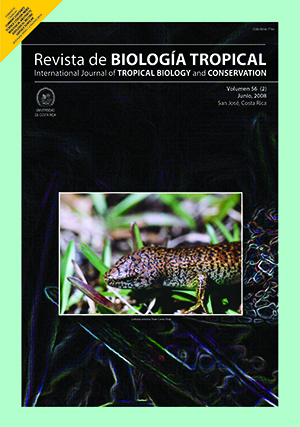Abstract
Caiman yacare (lagarto) and Melanosuchus niger (black caiman), sympatric species in the Bolivian Amazon basin, have been severely overexploited in the past. We present the results of a standardized survey of C. yacare and M. niger populations in order to evaluate their actual population status in twelve oxbow lakes of the Ichilo River floodplain. Additionally we explored the effect of environmental and anthropogenic variables on caiman distribution patterns. The average density of C. yacare and M. niger in the shoreline of floodplain lakes was of 6 and 1 ind/km, respectively. For both species, the population was composed mainly of juvenile individuals. We used regression tree analysis (RTA) to assess patterns of M. niger and C. yacare densities with eight environmental and two anthropogenic variables. The RTA analysis showed that the variation in the densities of both C. yacare (52.4 %) and M. niger (36.8 %) was related to water conductivity. For C. yacare, higher densities occurred at higher values of water conductivity, while M. niger densities followed an opposite trend, resulting in relatively well spatially segregated populations of the two species. After excluding conductivity, Lake-River Distance (LRD) was shown to be the main splitting variable in the RTA analysis. The observed distribution patterns may be the result of the historical post-hunting situation, in combination with differences in habitat selection by the two species, and competitive exclusion processes between the two species. M. niger, a species reported to be recovering slowly from previous low population levels, appears relatively well protected in the Ichilo river floodplain.Comments

This work is licensed under a Creative Commons Attribution 4.0 International License.
Copyright (c) 2008 Revista de Biología Tropical
Downloads
Download data is not yet available.






